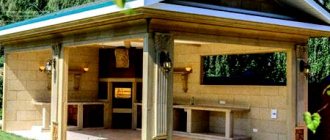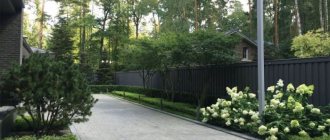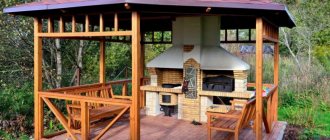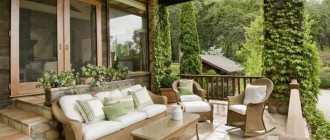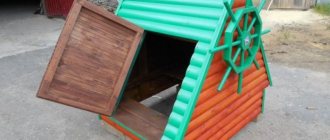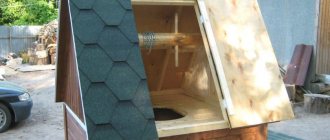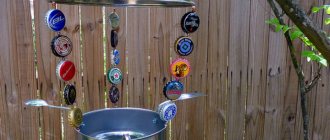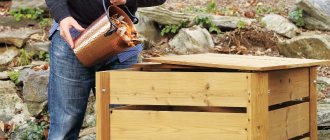In the summer, when the weather is good, people try to spend more time outdoors, going to country houses and dachas. Summer time is the time of conservation, preparations for the winter. A country house cannot do without a ready-made summer kitchen; it will greatly simplify the cooking process for the housewife.
You can make a summer kitchen with your own hands without the help of specialists and hired workers. If you choose the right materials and apply a little of your own skill and skill to it. Fortunately, there are enough projects for the construction of summer kitchens.
Place for construction
The first priority before choosing a project is to determine the location of the planned facility. Whether it will stand alone or be attached to the house, whether it is planned to connect them with a common canopy or terrace - these nuances are of significant importance when designing. When choosing the optimal location, you should take into account the proximity to your home.
We are talking about saving money when connecting communications. It is also important that it should be located as far as possible from sources with odors that irritate the sense of smell, for example, a toilet, a dog enclosure, a compost heap, sheds for birds or animals.
In this case, be sure to take into account the more frequent direction of the winds. And even before you start digging the foundation, at least mentally imagine whether the constructed structure will fit into the general landscape of the entire territory, which will serve as its general background.
Interior decoration
Here you can give free rein to your imagination or take a look at ready-made summer kitchen projects. But here are some recommendations on how to make everything as comfortable as possible:
- Even if the kitchen is made of brick, there is no reason not to finish the interior with wood;
- Install enough light to make cooking convenient;
- In the kitchen area, place the refrigerator, oven and sink as close to each other as possible;
- Wicker furniture, wood and everything else made from natural materials will be an excellent choice;
- Add flowers, decorative elements, etc.
When building an outdoor kitchen, in most cases you also need to make a foundation, which can then be covered with wood, slab or stone.
The most popular and simple designs of open kitchens are a light veranda and a gazebo. A cheap option is a gazebo with a columnar wooden foundation, a frame made of timber and a roof covered with corrugated sheets or polycarbonate. Place a grill, barbecue or oven on the edge.
The best option would be to combine materials: load-bearing pillars can be built from brick and continued with wood.
If you plan to hang cabinets and other furniture, then the double-walled option is perfect. In such a structure, the front and side walls form a corner, and the other corner is open. Such a kitchen can either be built separately or made into an extension to the house: in this case, you will already have 1 wall at your disposal, and it will become much easier to supply gas and electricity.
Functionality of a summer kitchen
If the summer kitchen is planned to be used not only for cooking, but also for other purposes - dining room, guest room, family vacation spot, then all these facts should be taken into account.
Very often there are cases when part of the kitchen is supposed to be used as a workshop, a closet for household equipment, a drying room for gardening products, and even a work office, and this is a significant factor influencing the size of the kitchen area.
Construction on a summer cottage site, which usually occupies no more than 6 acres, is more rational to carry out vertically. This means designing with a cellar (the purpose is known) and an attic, which can be used according to one of the above options.
Important: preliminary design will save a significant part of the budget and avoid possible long-term construction, since during construction “by eye” it is difficult to calculate construction costs.
Foundation
Whichever of the two options you choose, in 90% of cases a foundation will be required for both. Here's a quick guide:
- Mark the area and dig holes around the perimeter about a meter deep and 30-35 cm wide;
- Pour a mixture of sand and crushed stone about 25 cm high onto the bottom and compact it;
- Install the formwork and pour concrete. The hardening time is 25-28 days.
Types of construction
Possible options for summer kitchens can be described as open, closed and combined.
- Fully closed kitchen essentially represents a separate house with one or two rooms.
The dimensions depend on the plans for its use. Standard - approximately 9 to 12 squares. The advantages are that an enclosed space can be used all year round, household appliances and furniture are not subject to the vagaries of nature, and free access (if it is a summer cottage) to outsiders is limited.
The disadvantages are the high cost. A foundation with a depth of 50 cm or more is required if an attic or insulated attic is planned. Brick, block or stone walls and their corresponding roofing materials will also seriously lighten your wallet. To avoid discomfort in hot weather, you will need a sufficient number of windows, the price of which, together with installation, will also cost a tidy sum. - Construction of a kitchen is cheaper open method. Essentially, this is a platform on four pillars with a roof, or maybe without one.
The presence of walls is not necessary, it depends on the design intent. What is good about this choice is the minimum cost and speed of construction. The foundation is minimal, or even completely absent. Installing heating, extractor hoods, and installing doors and windows when unnecessary saves your budget. In such a kitchen you can safely install a grill, barbecue, grill or smokehouse.
The absence of walls and free access to fresh air can also be considered advantages, but only if the weather is good. During rainy, windy and cold seasons, your stay will be unpleasant. This is a significant disadvantage of open structures. - The positive qualities of the first and second combine combined options buildings Three walls or two, if they are adjacent to another structure, will protect from freely flowing winds, but will leave access to freshness through an open opening.
For wall material, dissimilar building materials can be used. For example, brick, stone or foam blocks are laid up to a height of about 1 m, and above that they use light chipboard panels, glazed frames, polycarbonate or slatted sheathing.
Please especially note: the edges of the roof in buildings of the 2nd and 3rd types must be extended beyond the perimeter of the kitchen area up to 50 cm to avoid slanting streams of rain getting inside in bad weather.
It is also very important, if the structure will be in the sun, to have a ceiling or a cushioning layer under the roof. Otherwise, in hot weather, even an open kitchen will resemble a fryer. The bedding material is cardboard based - roofing felt and roofing felt, based on foil or glass material, respectively, folgoizol and glass roofing felt, waterproofing has an asbestos paper base. Sold in rolls.
Open
Usually they have 1-2 walls or none at all, but more often it is just a frame with a roof that protects from the sun. However, some prefer to give up even the roof, which suggests that the design of a summer kitchen is an individual matter, depending on imagination and needs.
The most common types of open kitchens:
- Terrace
- Patio
- Alcove
If you have decided on the desired option, then let's figure out how to make a summer kitchen yourself, what materials to use, and share some useful tips.
Kitchen with terrace or canopy
The combination of a kitchen with a terrace or canopy successfully solves the problem of small spaces; the dining area is moved beyond the cooking area and is quite spacious.
The construction of the roof is not burdensome and, if building materials are available, can be completed quickly. The floor may be missing; it is enough to carefully level the surface. However, please note that in windy weather and with intense movement it will be dusty, so it is better to cover the entire area with paving slabs or natural stone.
The budget option is to simply cement it. It is not advisable to lay asphalt, as it is toxic. The polycarbonate roof will perfectly protect from natural precipitation and direct sunlight, making it comfortable to stay outdoors.
Polycarbonate is easy to work with, it is light, cuts well, bends, and at the same time is quite durable. A monolithic sheet is preferable, since the cellular sheet has less strength. If you still choose the latter, then purchase it with a thickness of 6 mm and above.
Roof
In numerous photos of a summer kitchen in a country house, you can see that most often the roof is made of bitumen tiles or metal tiles. These are truly the most popular materials, which we also recommend for their durability and reliability.
In addition, you can use:
- Slate
- Seam roofing
- Corrugated sheet
- Composite tiles
Summer kitchen in the gazebo
One of the original and quite popular finds is the construction of a spacious closed gazebo and equipping it with kitchen equipment.
Such designs have their advantages:
- The simplest foundation made of sleepers, asbestos pipes, piles.
- The uselessness of waterproofing and insulation of the floor.
- Construction speed subject to the use of wood (timber, board).
- Glazing most of the wall perimeter of the gazebo with opening windows creates an open effect in the warm season.
You should only take into account that any device with an open flame, according to fire safety rules, should be located at least 2 m from wood, plastic and other materials susceptible to rapid ignition.
Walls
When building brick walls, it is recommended to make masonry the width of a whole brick, as this will allow for better heat retention in winter. But if the gazebo is not planned for winter gatherings, then you can leave the width of half a brick.
It is much faster to assemble a house from wood. The best option is a frame made of timber; it is better to fasten it with self-tapping screws. Make the exterior from boards, and for interior decoration use plasterboard or plastic.
Grill and barbecue in the summer kitchen
Meat cooked over an open fire is almost an obligatory element of any outdoor feast. Shish kebab, pork or lamb ribs, lula kebab, Moldavian kostitsa and many other dishes are prepared on the grill, grill or barbecue.
Almost every owner of a private home has a basic barbecue. They can be made of iron, cast iron, brick or stone, portable or stationary. It all depends on the capabilities of the owner. In the summer kitchen, to fulfill any culinary plans, it is more convenient to install a barbecue with a barbecue, grill and even a smokehouse.
This furnace complex, subject to certain safety measures, can be built even in wooden premises. It is better to entrust the laying of the stove and its components to specialists, but you can fill the foundation yourself:
- First of all, a pit is dug under the foundation. The dimensions should be 10–20 cm wider than the stove base. The depth of the foundation is up to 50 cm. A sandy, well-compacted cushion; sprinkling of a mixture of crushed stone, pebbles, broken brick mixed with sand, topped with a layer of fine crushed stone. After thorough compaction, we cover everything with two layers of roofing felt (roofing felt).
- Along the perimeter of the pit, formwork and reinforcement coarse mesh are installed over the entire area at a height of 2-3 cm from the base. It is filled with a concrete solution, which is mixed in the traditional way from crushed stone, sand and cement in a ratio of 5-3-1. It is recommended to fill in 2-3 layers.
- After the base has set, usually on the 2nd - 3rd day, a cement screed is made over the entire area, followed by laying roofing material. It will prevent the penetration of moisture from the soil and the destruction of the brickwork of the furnace.
Around the stove, after it is finished, be sure to lay the floor from fire-resistant materials - stone, paving stones or floor tiles. If the floors are wooden or made of other flammable materials, it is necessary to line the area with metal or other fire-resistant sheets. Up to 3 m in front, one on the sides is enough.
Choice of colors
The color design of a summer kitchen is an important point, thanks to which it will be pleasant to cook and just spend time in the room. When choosing a color scheme, you can rely on the advice of designers:
- The interior of a summer kitchen should predominantly consist of warm and rich colors.
- General colors should be selected depending on the size of the room - it is better to decorate a small kitchen in light colors to visually expand the space. A large kitchen can be decorated in both light and dark colors.
- It is appropriate to highlight the cooking area or oven with bright and contrasting colors.
Bright colors in an open summer kitchen Source design-homes.ru/
In one of the sections above, the principles by which the choice of colors is made depending on the style of the interior were described.
Selection of furniture
Kitchen furniture and kitchen units must have a number of special qualities:
- moisture resistance;
- resistance to high temperatures;
- resistance to sunlight;
- easy to clean, resistant to cleaning agents;
- durability;
- functionality.
Furniture for a summer kitchen should correspond to the style direction and should not be too expensive
Therefore, it is better to refuse luxury in the form of wooden furniture (if it is not treated with a special coating), furniture made of laminated chipboard and MDF, and options with fabric or leather upholstery. The best options for a summer kitchen would be:
- veneered MDF furniture;
- wooden garden furniture, especially with folding structures;
- forged furniture;
- stainless steel options;
- wicker elements;
- plastic furniture.
Rattan wicker furniture looks chic and is not afraid of moisture, but is quite expensive
And this is what furniture made of wicker plastic looks like rattan - a good option if the budget is limited
Finnish grill house
This is a hexagonal glazed gazebo made of wood with a double door, inside of which there is a barbecue or grill installed clearly in the center with a hood above a round tabletop. Fish, vegetables, and meat are cooked on the hearth.
Benches are set up along the perimeter of the gazebo. The grill kitchen is installed on a solid reinforced concrete foundation, the pipe is led out through the roof. The walls are covered with clapboard or block house.
Externally, the house looks like a classic closed gazebo, but inside the space combines three functions - a cooking area, a dining room and a relaxation area.
Photo gallery of finished projects
Any project starts with a picture. Some people know exactly what they want and imagine a picture of the finished project, while others are lost in the variety of options and clearly need help. In this case, a photo gallery of ready-made projects for various kitchens, made in different styles and with different forms of implementation, can be helpful.

